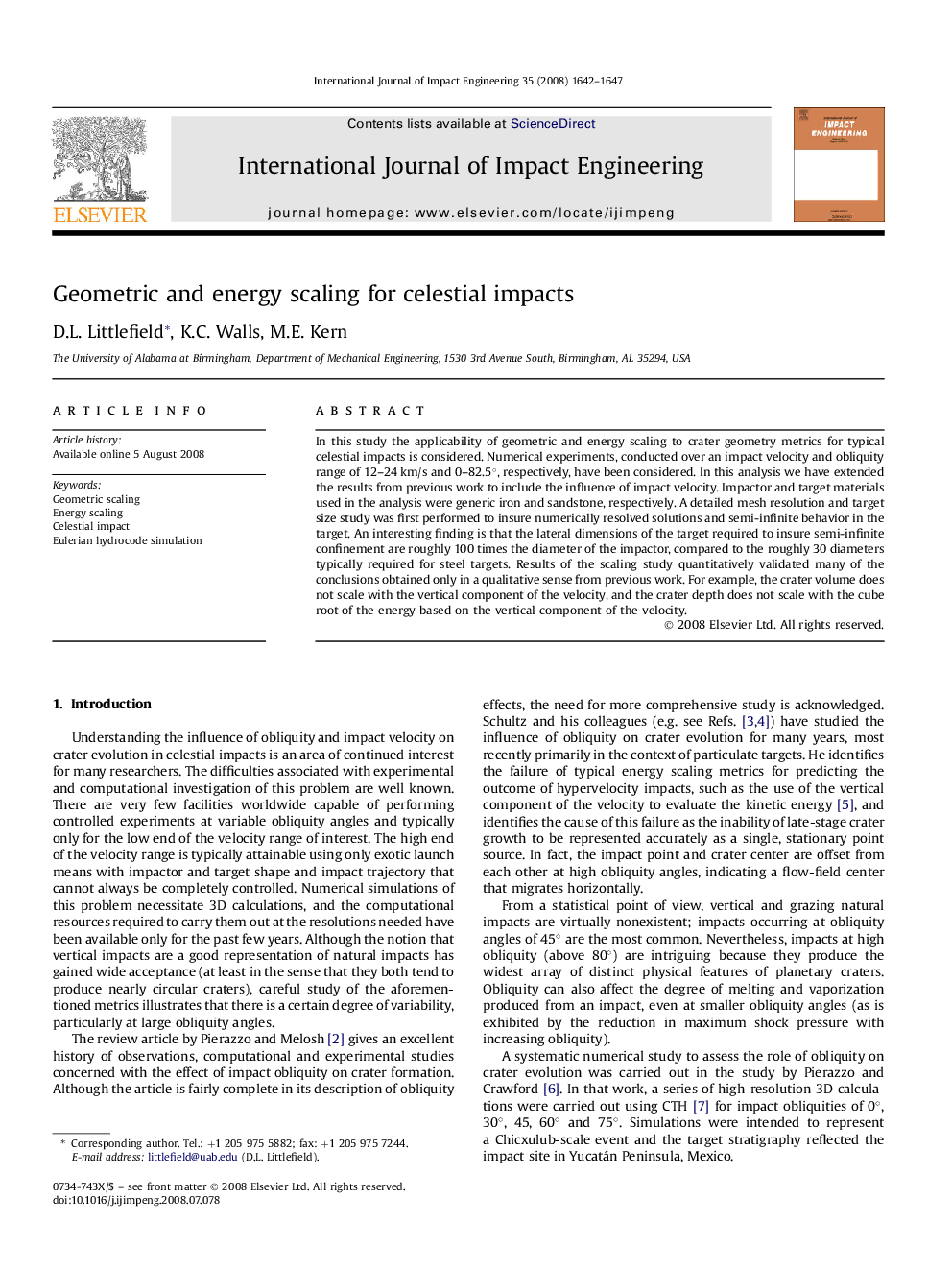| Article ID | Journal | Published Year | Pages | File Type |
|---|---|---|---|---|
| 779482 | International Journal of Impact Engineering | 2008 | 6 Pages |
In this study the applicability of geometric and energy scaling to crater geometry metrics for typical celestial impacts is considered. Numerical experiments, conducted over an impact velocity and obliquity range of 12–24 km/s and 0–82.5°, respectively, have been considered. In this analysis we have extended the results from previous work to include the influence of impact velocity. Impactor and target materials used in the analysis were generic iron and sandstone, respectively. A detailed mesh resolution and target size study was first performed to insure numerically resolved solutions and semi-infinite behavior in the target. An interesting finding is that the lateral dimensions of the target required to insure semi-infinite confinement are roughly 100 times the diameter of the impactor, compared to the roughly 30 diameters typically required for steel targets. Results of the scaling study quantitatively validated many of the conclusions obtained only in a qualitative sense from previous work. For example, the crater volume does not scale with the vertical component of the velocity, and the crater depth does not scale with the cube root of the energy based on the vertical component of the velocity.
